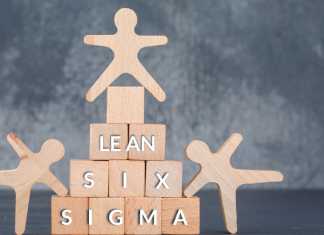Quality Control Inspector Roles and Responsibilities Explained
Ensuring the highest quality of products and services is crucial for business success. This is where the role of a Quality Control Inspector becomes essential. These professionals are responsible for examining products and processes...
Lean and Six Sigma in the Automotive Industry
Six Sigma is a quality management methodology aiming to improve product and service quality by identifying and eliminating defects. It is used in the automotive industry to improve the quality of vehicles and manufacturing...
Six Sigma vs Kaizen: Understanding the Key Differences
As the entire world is turning into a competitive space, almost every company and organization is starting to implement different methodologies for overall management development. Many training programs are available to improve existing processes...
Six Sigma in Pharmaceutical Industry Explained
The term "Six Sigma" refers to the statistical measure of near-perfection, intending to achieve six standard deviations between the mean and the nearest specification limit. The methodology applies to many industries and is used...
10 Key Quality Manager Skills You Need to Succeed
Quality Managers deal with ensuring the quality of the product/service they are tasked with. They play a crucial role in ensuring the quality remains the same in an organization. Further, they ensure that these...
Understanding the Importance of Communication in Six Sigma
In the high-stakes game of Six Sigma, communication isn't just important—it's everything. In the complex world of Six Sigma, where precision, efficiency, and continuous improvement are crucial, clear and concise communication ensures that team...
What is Poka Yoke? Understanding Its Importance
Poka-yoke (noticeable POH KA YOKE) is an error-proofing technique developed by the Japanese engineer Shigeo Shingo during the 1960s to remove errors or avoid errors. The term "poka-yoke" is derived from the Japanese expression...
What is Lean Six Sigma? Overview & Insights
In a world where efficiency and quality become the benchmarks for success, the demand for methodologies that can deliver both has advanced. Lean Six Sigma, a blend of the Lean method's speed and efficiency...
Six Sigma in Aerospace Industry: Key Insights and Benefits
Six Sigma is a data-driven, continuous improvement approach that aims to reduce defects and improve quality in manufacturing and service processes. This blog delves into how Six Sigma in aerospace industry is leveraging to...
5 Key Challenges in Implementing Quality Management Systems
Executives, specialists, and employees have praised the Six Sigma continuous process improvement methodology for years. Companies that employ this methodology have enhanced their products, services, and procedures. In addition, they increased productivity, customer satisfaction,...


























